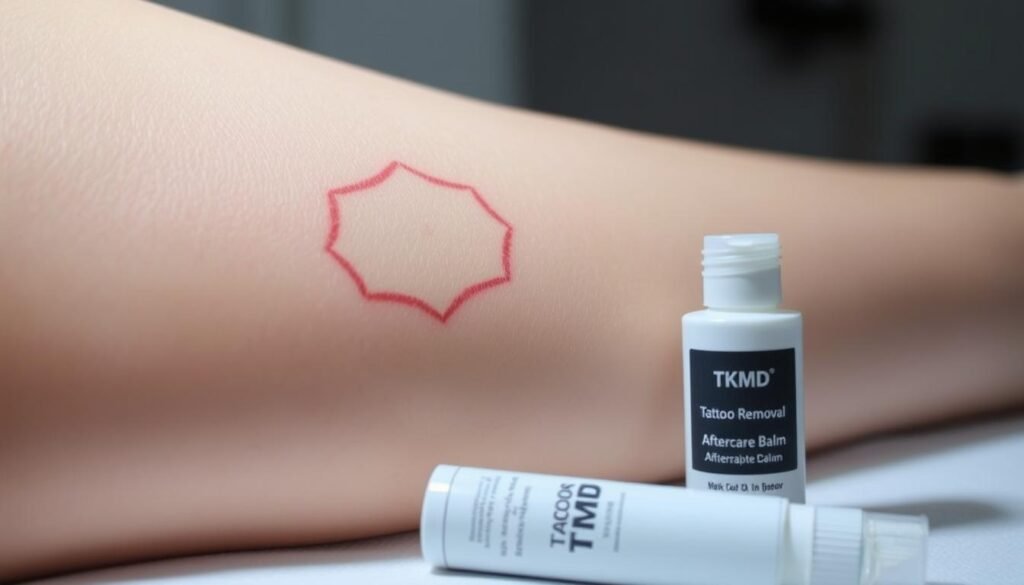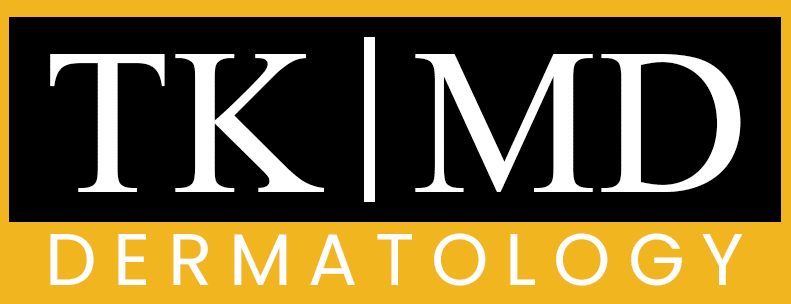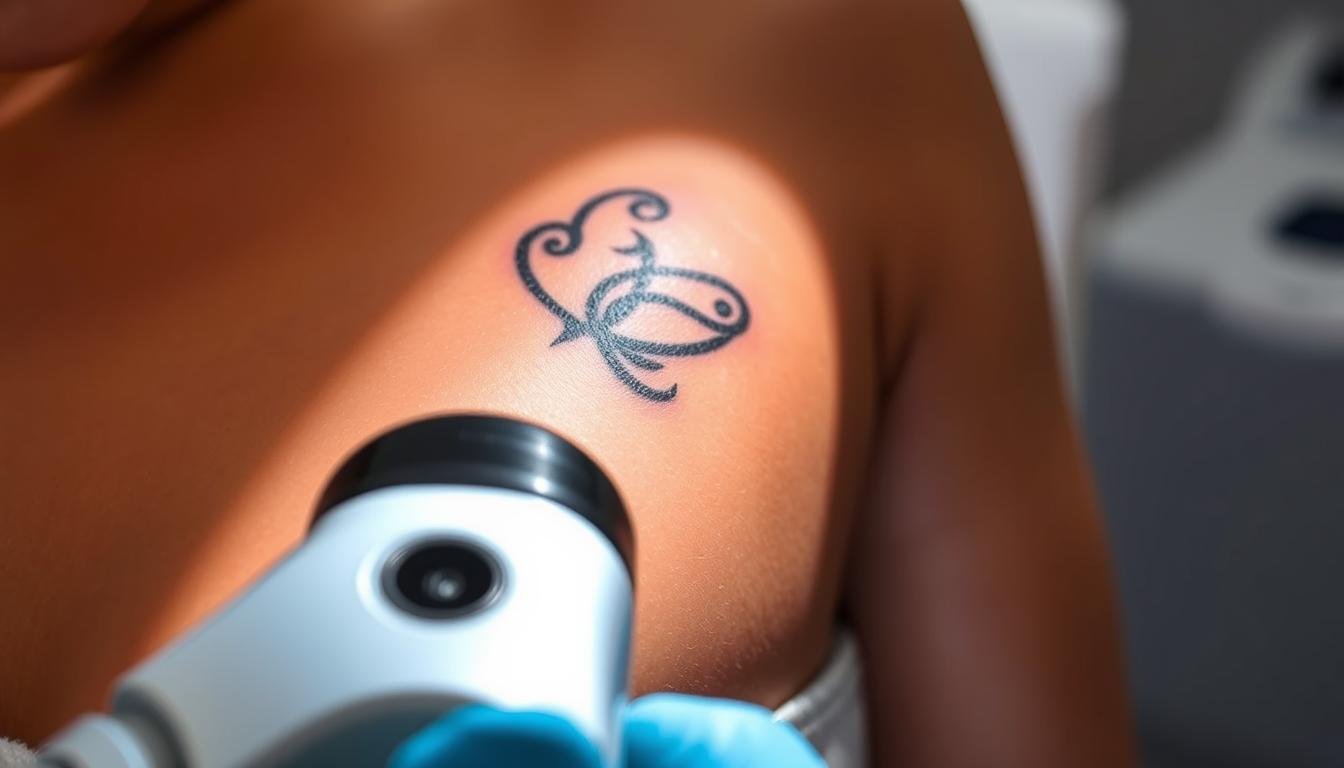Tattoos are a form of self-expression, but tastes and preferences can change over time. Whether you’ve outgrown your tattoo, regret getting it, or simply changed your mind, you’re not alone in wanting to erase it.
The permanence of tattoos is rooted in the ink used, which is inserted into the dermal layer of the skin. Understanding this is crucial to appreciating why certain tattoo removal methods work better than others.
Advancements in laser technology have made tattoo removal more effective. Techniques like the Accelerated Removal Technique (ART®) have emerged, offering promising results for those seeking to remove unwanted ink.
Key Takeaways
- Several methods are available for tattoo removal, with laser removal being the most effective.
- The success of tattoo removal depends on factors like tattoo age, ink type, and skin characteristics.
- Laser technology has significantly improved the efficiency of tattoo removal.
- Understanding the science behind tattoo permanence is key to choosing the right removal method.
- Proper aftercare is essential for optimal results during the removal process.
Understanding Tattoo Permanence
Tattoos are permanent because of the way ink particles are structured and processed by the body. When a tattoo is applied, the ink is inserted into the dermis, the second layer of the skin.
The immune system plays a crucial role in this process, as it attempts to eliminate the foreign ink particles. However, the particles are too large for the immune system to remove completely.
How Tattoos Work in Your Skin
Tattoo ink is made up of particles that are too large to be removed by the immune system. As a result, the ink remains in the skin, creating the permanent design.
Why Tattoos Are Difficult to Remove
The primary challenge in tattoo removal is breaking down the large, stable ink particles into fragments small enough for the immune system to process. Different ink colors respond differently to removal techniques, and the depth of ink placement in the dermis makes it difficult for removal methods to reach without affecting surrounding tissue.
Effective removal methods must break down these large particles into smaller pieces that the body can naturally eliminate. The body’s inflammatory response to tattoo ink also creates a fibrous capsule around the particles, further protecting them from natural removal processes.
The Fastest Way to Remove Tattoo: Laser Treatment
For those seeking to remove tattoos quickly, laser treatment stands out as the most effective method. Laser tattoo removal has revolutionized the process, offering a faster and more reliable solution compared to traditional methods.
How Laser Removal Works
Laser removal works by targeting the tattoo ink with high-intensity light beams. This process breaks down the ink into smaller particles, which are then absorbed by the body’s immune system.
Q-Switched Laser Technology
Q-Switched lasers are a significant advancement in laser tattoo removal. They emit high-powered pulses that shatter the tattoo ink, allowing for effective removal with minimal damage to the surrounding skin.
Accelerated Removal Technique (ART®)
The Accelerated Removal Technique (ART®) by Zapatat® represents a breakthrough in laser tattoo removal. ART® involves four unique laser treatments within a single 45-minute session, maximizing ink fragmentation and significantly reducing the number of sessions required.
ART® can remove most tattoos in just 2-4 sessions over 24-48 weeks, compared to the 2-3 years typically required with conventional laser methods. A single ART® session can achieve 50-80% ink reduction after 12-14 weeks.
Other Effective Tattoo Removal Methods
Besides laser treatment, several alternative methods can be considered for removing unwanted tattoos. These methods have their own advantages and disadvantages, and the choice of method depends on various factors, including the size, location, and type of tattoo.
Surgical Excision
Surgical excision involves surgically removing the tattooed skin. This method is typically used for small tattoos and can be effective. However, it may result in scarring and is usually considered a last resort due to its invasive nature.
Dermabrasion
Dermabrasion is a technique that involves sanding away the top layers of skin to remove the tattoo. This method can be painful and may lead to scarring and changes in skin texture. It is not as commonly used today due to the availability of more advanced techniques.
Chemical Peels
Chemical peels, particularly those using trichloroacetic acid (TCA), can be used to remove tattoos by breaking down and removing the top layers of skin
The procedure involves applying the acid solution directly to the tattooed area, causing controlled damage that allows the skin to shed the layers containing ink. For more information on skin rejuvenation techniques, including chemical peels, various resources are available.
- Chemical peels for tattoo removal typically use trichloroacetic acid (TCA).
- The procedure involves applying the acid solution directly to the tattooed area.
- Unlike laser treatment, chemical peels are less selective and affect all skin in the treated area.
Each of these alternative methods offers a different option for tattoo removal, with varying degrees of success and potential side effects.
Factors Affecting Tattoo Removal Speed
Several factors influence the speed and effectiveness of tattoo removal. The success of the removal process depends on various individual characteristics and tattoo specifics.
Tattoo Age and Ink Type
The age of the tattoo and the type of ink used are significant factors in determining removal speed. Older tattoos tend to fade faster because the ink has had time to break down naturally over the years. The type of ink used can also impact removal, with some inks being more responsive to laser treatment than others.
Tattoo Size and Location
The size and location of the tattoo on the body also play crucial roles in removal speed. Larger tattoos require more sessions, while the location can affect the skin’s response to treatment. Areas with thicker skin may require adjusted treatment protocols.
Skin Type and Color
 Skin type and color are critical factors in tattoo removal. Individuals with lighter skin (Fitzpatrick skin types I-III) generally experience faster and more complete removal. In contrast, those with darker skin tones (Fitzpatrick types IV-VI) may require special consideration, such as the use of Nd:YAG lasers, to avoid pigmentation changes. Pre-existing skin conditions like eczema or psoriasis can also complicate the removal process.
Skin type and color are critical factors in tattoo removal. Individuals with lighter skin (Fitzpatrick skin types I-III) generally experience faster and more complete removal. In contrast, those with darker skin tones (Fitzpatrick types IV-VI) may require special consideration, such as the use of Nd:YAG lasers, to avoid pigmentation changes. Pre-existing skin conditions like eczema or psoriasis can also complicate the removal process.
| Skin Type | Removal Speed | Recommended Laser |
|---|---|---|
| Lighter Skin (I-III) | Faster | Q-Switched Lasers |
| Darker Skin (IV-VI) | Slower, with precautions | Nd:YAG Lasers |
The complexity of tattoo removal highlights the need for personalized treatment plans, taking into account individual skin types, tattoo characteristics, and other factors to achieve the best results.
What to Expect During the Removal Process
The tattoo removal process can be complex, but understanding what to expect can make it more manageable. Tattoo removal involves several steps, and being informed can help you prepare for the journey ahead.

Number of Sessions Required
The number of treatments needed for tattoo removal varies depending on the size, location, and ink type of the tattoo. Generally, multiple sessions are required to achieve optimal results.
Time Between Treatments
The laser treatment sessions are typically spaced several weeks apart to allow the skin to heal. This interval helps minimize potential side effects and ensures the best possible outcome.
Pain and Discomfort Management
During the removal process, the treated area may feel painful and raw for several days after the procedure. Most providers offer pain management options, including topical anesthetics and cooling systems, to help alleviate discomfort. The sensation during laser treatment is often described as a series of quick snaps against the skin.
Aftercare for Faster Healing and Better Results
To ensure the best possible outcome from tattoo removal, a comprehensive aftercare plan is essential. Proper care after each treatment session can significantly impact the effectiveness of the process and the overall health of your body.
Immediate Post-Treatment Care
Right after treatments, it’s crucial to keep the treated area clean and dry. Gently wash the area with mild soap and lukewarm water, then apply a thin layer of ointment recommended by your practitioner.
Long-Term Aftercare Tips
For optimal results, maintain good skin health by moisturizing the treated area regularly and protecting it from direct sun exposure. Using a broad-spectrum sunscreen with high SPF is advisable once the skin has healed sufficiently.
Lifestyle Factors That Speed Up Removal
A healthy lifestyle can enhance the tattoo removal process. Key factors include:
- Staying hydrated by drinking at least 8-10 glasses of water daily to support lymphatic function.
- Engaging in regular exercise to improve circulation and lymphatic flow.
- Consuming a nutritious diet rich in antioxidants, particularly vitamin C, vitamin E, and zinc.
- Avoiding smoking and excessive alcohol consumption to prevent restricted blood flow and impaired immune function.
- Practicing stress management techniques like meditation or yoga to support immune function.

Conclusion: Choosing the Right Tattoo Removal Method
With multiple tattoo removal methods available, making an informed decision is essential. The fastest way to remove a tattoo permanently often involves combining advanced techniques like ART® with optimal aftercare and lifestyle adjustments. When choosing a removal method, consider factors such as the tattoo’s characteristics, your skin type, and budget constraints. Consulting with specialists who offer different removal methods provides a comprehensive understanding of your options. Setting realistic expectations about timeframes, results, and potential side effects is crucial for satisfaction with the removal process.


